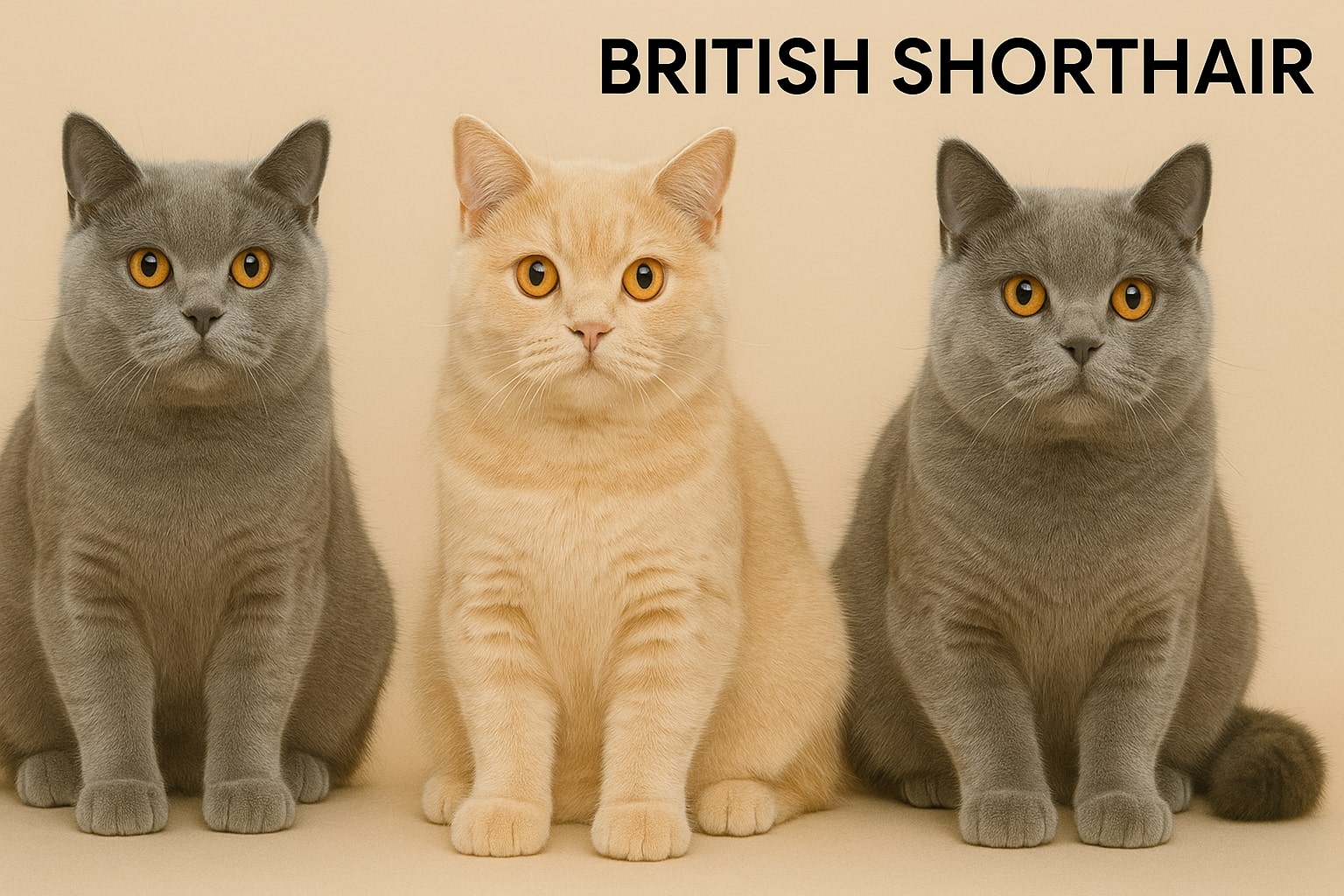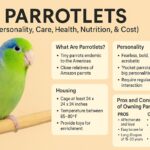The British Shorthair cat stands as one of the most recognizable and beloved cat breeds worldwide, known for its plush coat, round face, and calm demeanor.
These cats have charmed their way into the hearts of cat lovers for centuries with their sturdy build, easygoing nature, and those distinctive round eyes that seem to hold ancient wisdom. This article explores everything you need to know about British Shorthairs, from their fascinating history to their care requirements and typical health considerations.
The History and Origins of the British Shorthair
The story of the British Shorthair begins far earlier than many might expect. Historical evidence suggests that cats reached the British Isles before the Romans arrived. Unlike many other European regions where cats spread alongside Roman expansion, the British Isles had domestic cats earlier in their history.
These early cats interbred with the European wildcat population native to the region. Due to their geographical isolation on the British Isles, these cats naturally developed distinct characteristics over many centuries. The harsh British climate encouraged the evolution of a sturdy cat with a thick, water-resistant coat perfectly suited to the cool, damp conditions1.
What we recognize today as the British Shorthair began taking formal shape in the 19th century. Some historical accounts credit Harrison Weir, a British artist and cat enthusiast, with initiating the standardization of the breed, while other sources suggest it may have been a collective effort among early cat fanciers.
Regardless of who deserves the primary credit, these cats made their formal debut at the world’s first organized cat show, held at London’s Crystal Palace in 1871, where they enjoyed immediate popularity.
The breed faced significant challenges in the early 20th century. By the time World War I arrived, British Shorthair breeding stock had become dangerously scarce. To preserve the breed, breeders introduced Persian cats into the bloodline. This crossbreeding ultimately led to the development of what would later become the British Longhair variety. During this period, any long-haired offspring were typically redirected into Persian breeding programs.
Physical Characteristics
The British Shorthair is immediately recognizable by its distinctive appearance. These cats have a powerful, robust build that gives them a substantial presence despite their medium size. Their broad chests, thick legs, and rounded paws create an impression of strength and solidity.
Weight can vary significantly in British Shorthairs. Males typically weigh between 9-17 pounds, while females are somewhat smaller at 7-12 pounds. This notable size difference between males and females makes the British Shorthair one of the more sexually dimorphic domestic cat breeds.
Their heads are proportionately large and rounded, with full cheeks that become particularly prominent in mature males, who often develop impressive jowls as they age. Their muzzles are short but not flat like Persian cats. British Shorthairs have large, round eyes that contribute significantly to their appealing expression. In the classic “British Blue” variety, the eyes are deep copper-orange, but eye color varies depending on coat color.
While the blue-gray coat (officially known as “British Blue”) remains the most recognized variety, British Shorthairs actually come in an impressive array of approximately 30 different colors. These include black, red, cream, silver, golden, chocolate, and lilac. They also display various patterns such as tabby, tortoiseshell, calico, and pointed colorations.
The coat itself is short but remarkably dense and plush, with a crisp texture that gives it a distinctive feel. This thick fur stands away from the body slightly, creating the appearance of excellent insulation, which indeed it provides.
Another distinctive physical trait is their tail, which is thicker than most cat breeds and has a blunt, rounded tip rather than tapering to a point.
Temperament and Personality
British Shorthairs have earned a reputation for their even temperament and laid-back attitude. They tend to be calm, affectionate cats that maintain a certain dignity and independence. Their personality offers an appealing balance that many cat owners appreciate – they’re social without being demanding and affectionate without being clingy.
Unlike some more high-strung breeds, British Shorthairs rarely create chaos in the home. They’re known for being relatively mess-free and non-destructive, making them excellent apartment cats. Their moderate activity level means they enjoy playtime but don’t require constant entertainment.
An interesting quirk of the British Shorthair’s temperament is their approach to physical affection. While they genuinely enjoy human company and like to be near their family members, they typically aren’t “lap cats.” Many British Shorthairs prefer to sit beside their humans rather than on them. They may follow you from room to room to maintain proximity without demanding constant physical contact.
The key to physical interaction with British Shorthairs lies in respecting their boundaries. They generally dislike being picked up or restrained but appreciate gentle petting and scratching. When they feel free to move away if they choose, they’re more likely to enjoy physical affection on their terms. If their boundaries are respected, they’re generally forgiving and will continue to seek out company.
British Shorthairs tend to get along well with children and other pets, particularly when raised with them from kittenhood. Their patient nature makes them suitable for family life, though they may retreat to a quiet spot if household activity becomes too intense.
These cats are famously good sleepers, typically spending 14 to 16 hours per day in slumber. This tendency to lounge about, combined with their love of comfortable furniture, has earned them the affectionate nickname “couch potatoes”.
Another notable trait is their relatively quiet nature. British Shorthairs are among the least vocal cat breeds, rarely meowing without good reason. When they do communicate vocally, it tends to be with soft, short sounds rather than persistent yowling.
Literature lovers might be interested to know that British Shorthairs have made their mark on popular culture. The breed reportedly served as inspiration for the Cheshire Cat in Lewis Carroll’s “Alice in Wonderland” and the character in the fairy tale “Puss in Boots”.
Care and Maintenance
One of the appealing aspects of British Shorthairs is their relatively low maintenance care requirements. Despite their plush, dense coat, grooming needs are minimal compared to long-haired breeds.
For coat care, a weekly brushing session with a soft-bristle brush or grooming glove is typically sufficient to remove loose fur and prevent matting. During seasonal shedding periods, more frequent brushing may be helpful to control loose hair.
Unlike some breeds that require regular bathing, British Shorthairs rarely need baths unless they get particularly dirty. Their coat naturally repels dirt and doesn’t tend to develop the oily buildup that necessitates frequent washing in some other breeds. When bathing is necessary, a mild cat shampoo should be used, followed by thorough rinsing to prevent skin irritation.
Nail care is an important aspect of maintenance for British Shorthairs, as it is for all cats. Regular nail trimming every 1-2 weeks helps prevent overgrowth and potential problems. When trimming, focus on removing just the sharp tips to avoid cutting the quick, which would cause pain and bleeding.
Diet management deserves special attention with British Shorthairs. These cats have hearty appetites and a tendency toward weight gain, especially as they mature and become less active. Obesity is a significant health concern for this breed, so portion control and appropriate food selection are essential. Some owners find that scheduled feeding rather than free-feeding helps maintain proper weight.
In terms of activity, British Shorthairs benefit from moderate play sessions to keep them physically fit and mentally stimulated. Their playfulness often decreases noticeably after their first year, so establishing regular exercise habits early can help maintain better long-term health.
British Shorthairs reach physical maturity more slowly than many other cat breeds. While most cats are fully grown by 12-18 months, British Shorthairs continue developing until they’re approximately 3-5 years old, gradually achieving their full size and muscle development.
Health Concerns
While generally robust, British Shorthairs do face several breed-specific health concerns that prospective and current owners should be aware of:
Hypertrophic Cardiomyopathy (HCM) represents one of the most significant health concerns for British Shorthairs. This genetic heart disease causes thickening of the heart muscle walls, which can eventually lead to heart failure if left unaddressed. Regular cardiac screenings are recommended, especially for cats used in breeding programs. According to veterinary research, early detection through echocardiograms can significantly improve management outcomes.
Polycystic Kidney Disease (PKD) also affects British Shorthairs at higher rates than some other breeds. This inherited condition causes fluid-filled cysts to form in the kidneys, potentially leading to kidney failure over time. Genetic testing can identify carriers of the PKD gene, and responsible breeders screen their breeding stock to reduce disease prevalence.
Obesity presents a major health risk for British Shorthairs due to their natural tendency toward weight gain and relatively sedentary lifestyle, particularly as they age. Excess weight can trigger or worsen numerous health problems, including diabetes, arthritis, and heart disease. Weight management through appropriate diet and exercise remains essential throughout a British Shorthair’s life.
Dental problems also commonly affect British Shorthairs. Periodontal disease and tooth decay can develop without proper preventative care. Regular dental checkups, professional cleanings when recommended by veterinarians, and at-home dental care such as brushing or dental treats can help maintain oral health.
Some British Shorthairs may develop asthma, causing symptoms like coughing, wheezing, and breathing difficulty. Environmental factors such as dust, smoke, and certain litter can trigger or worsen asthmatic episodes. Any signs of respiratory distress warrant immediate veterinary attention, as proper management can significantly improve the quality of life for affected cats.
With appropriate care and regular veterinary checkups, British Shorthairs typically enjoy a good lifespan of 12 to 17 years. Some individuals with excellent care may even live into their early twenties.
Living with a British Shorthair
British Shorthairs adapt well to various living situations, from spacious houses to apartments. Their moderate energy levels and generally quiet nature make them suitable for different household types. They appreciate having comfortable resting spots throughout the home, particularly those that allow them to observe household activities from a safe perch.
These cats typically form strong bonds with their human families without becoming excessively dependent. They often develop a routine of following family members around the house, maintaining a companionable presence without demanding constant attention.
British Shorthairs generally interact well with children, though they may retreat if handling becomes too rough or intrusive. Teaching children to respect the cat’s boundaries usually results in a harmonious relationship. Similarly, they typically coexist peacefully with other pets when properly introduced.
An interesting quirk of British Shorthairs is their individualized approach to affection. While not typically lap cats, they express attachment in their own ways. Some might sleep at the foot of your bed rather than on your pillow, or sit beside you rather than on you. This independent but sociable nature strikes a balance that many cat owners find particularly appealing.
Conclusion
The British Shorthair represents a fascinating blend of ancient heritage and modern appeal. From their origins as working cats in the British Isles to their status as one of the world’s most recognizable pedigree breeds, these cats have maintained the sturdy build and practical coat that served their ancestors well, while developing the even temperament that makes them such agreeable companions.
Their distinctive appearance – particularly the round face, dense coat, and expressive eyes – creates an unmistakable look that cat enthusiasts worldwide immediately recognize. Beyond their physical charm, their balanced personality offers companionship without excessive demands, making them suitable for various households and lifestyles.
For those considering adding a British Shorthair to their family, understanding their specific needs and characteristics helps ensure a successful relationship. Their moderate grooming requirements, health considerations, and behavioral traits all contribute to the overall care picture. With appropriate attention to these aspects, British Shorthairs typically reward their owners with many years of steady, good-natured companionship.
- Parrotlets (Personality, Care, Health, Nutrition, & Cost) - June 20, 2025
- Caique (Personality, Care, Health, & Nutrition) - June 20, 2025
- The Complete Guide to Golden Retrievers - June 9, 2025















